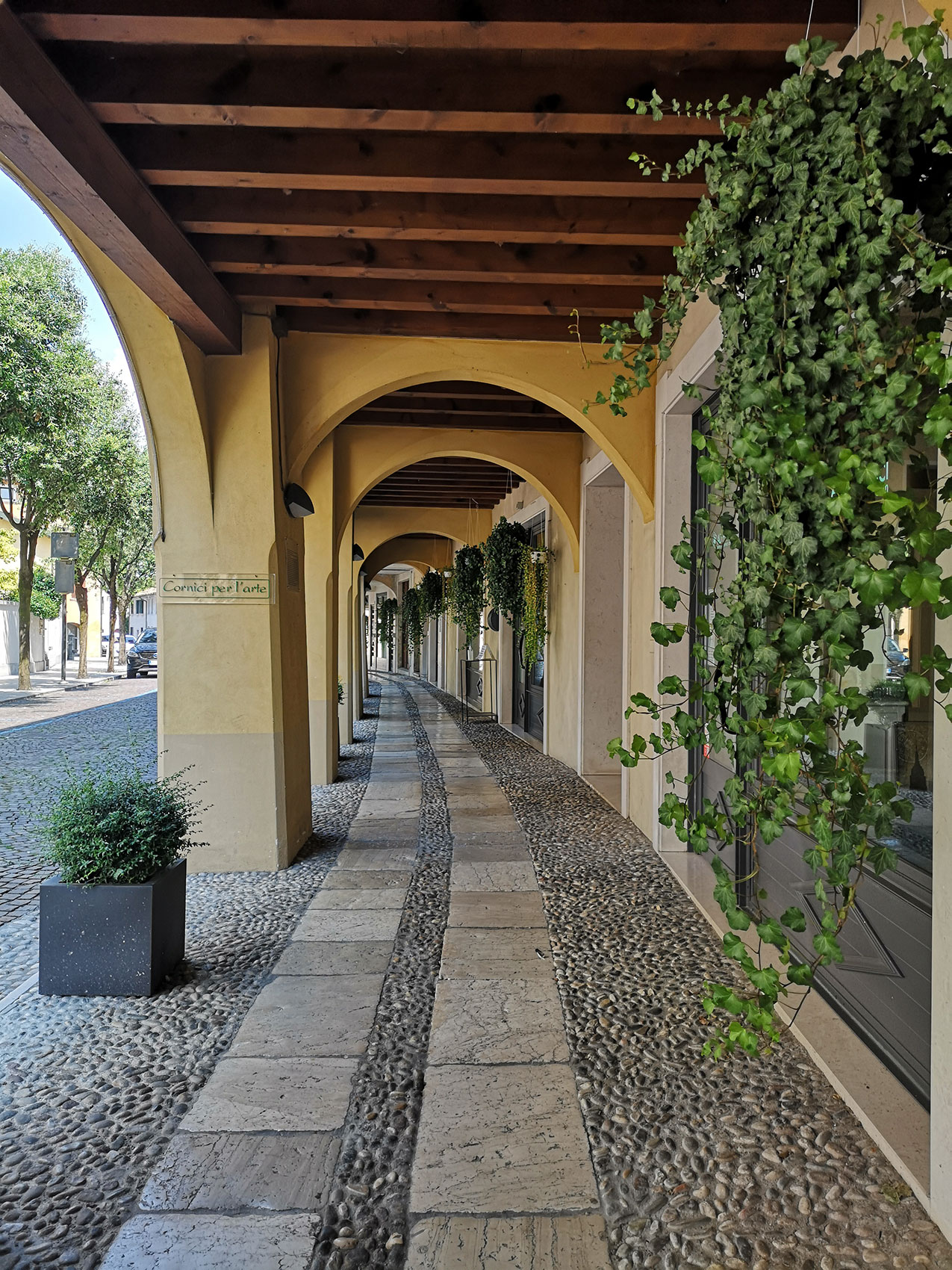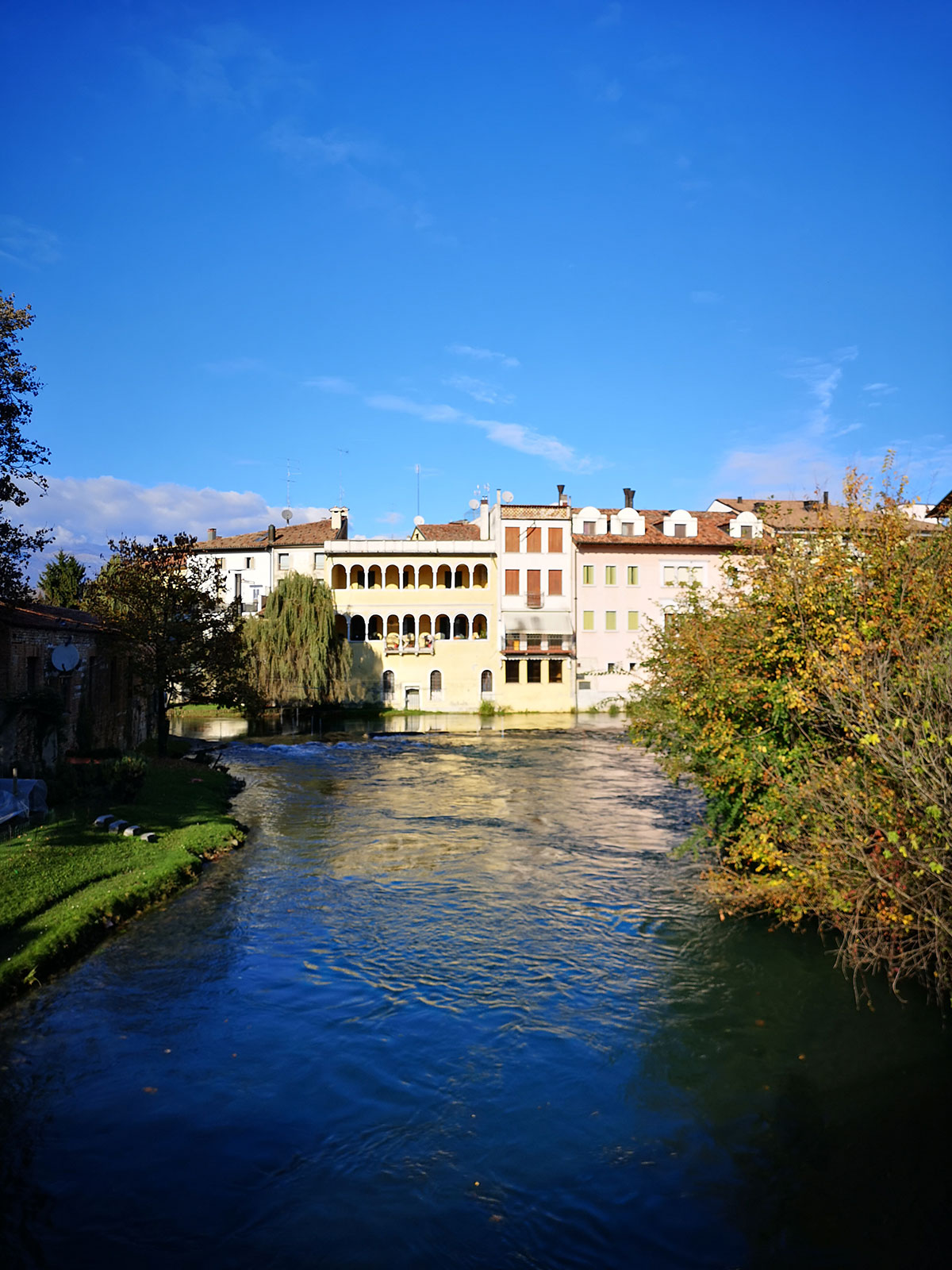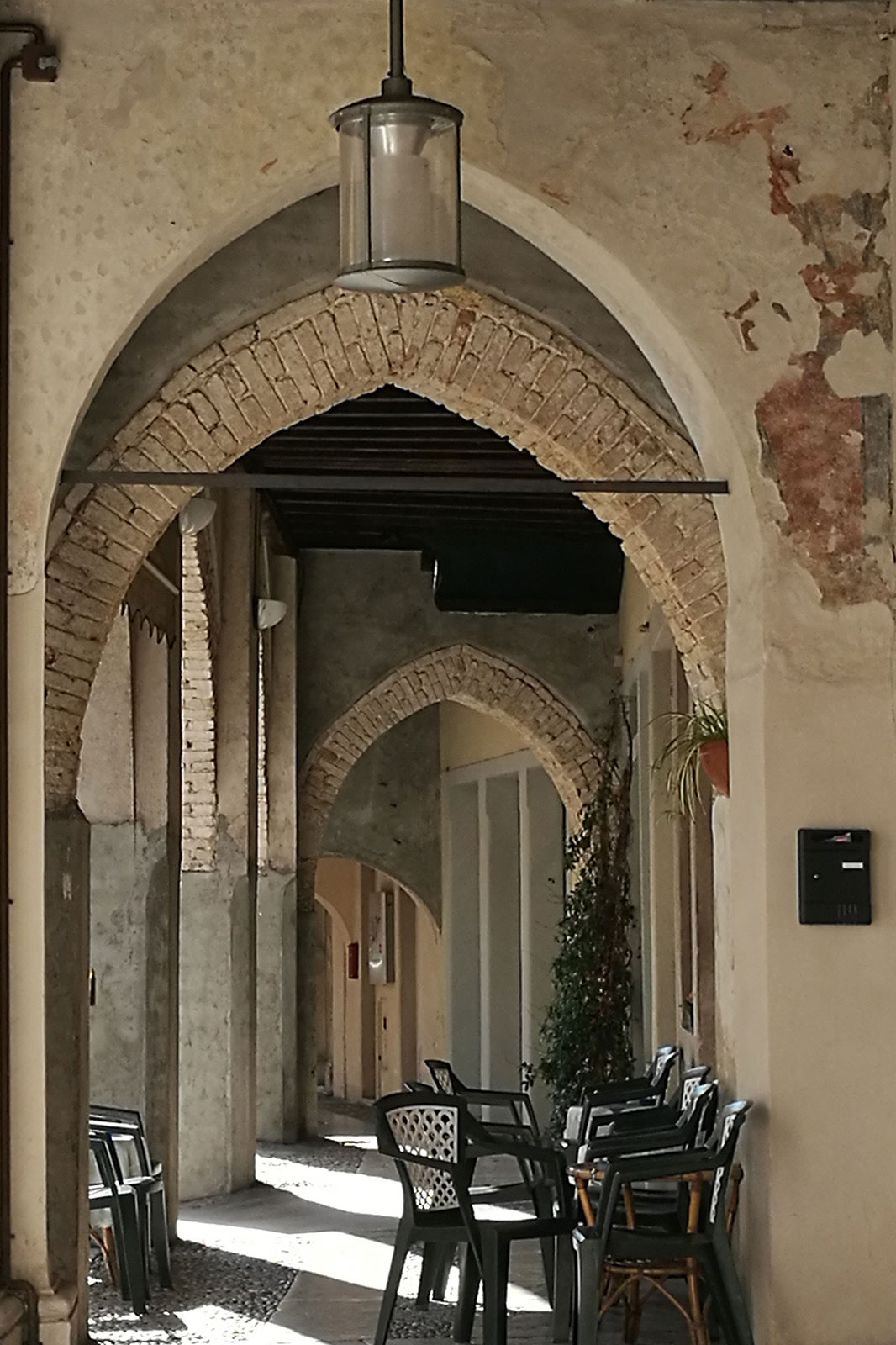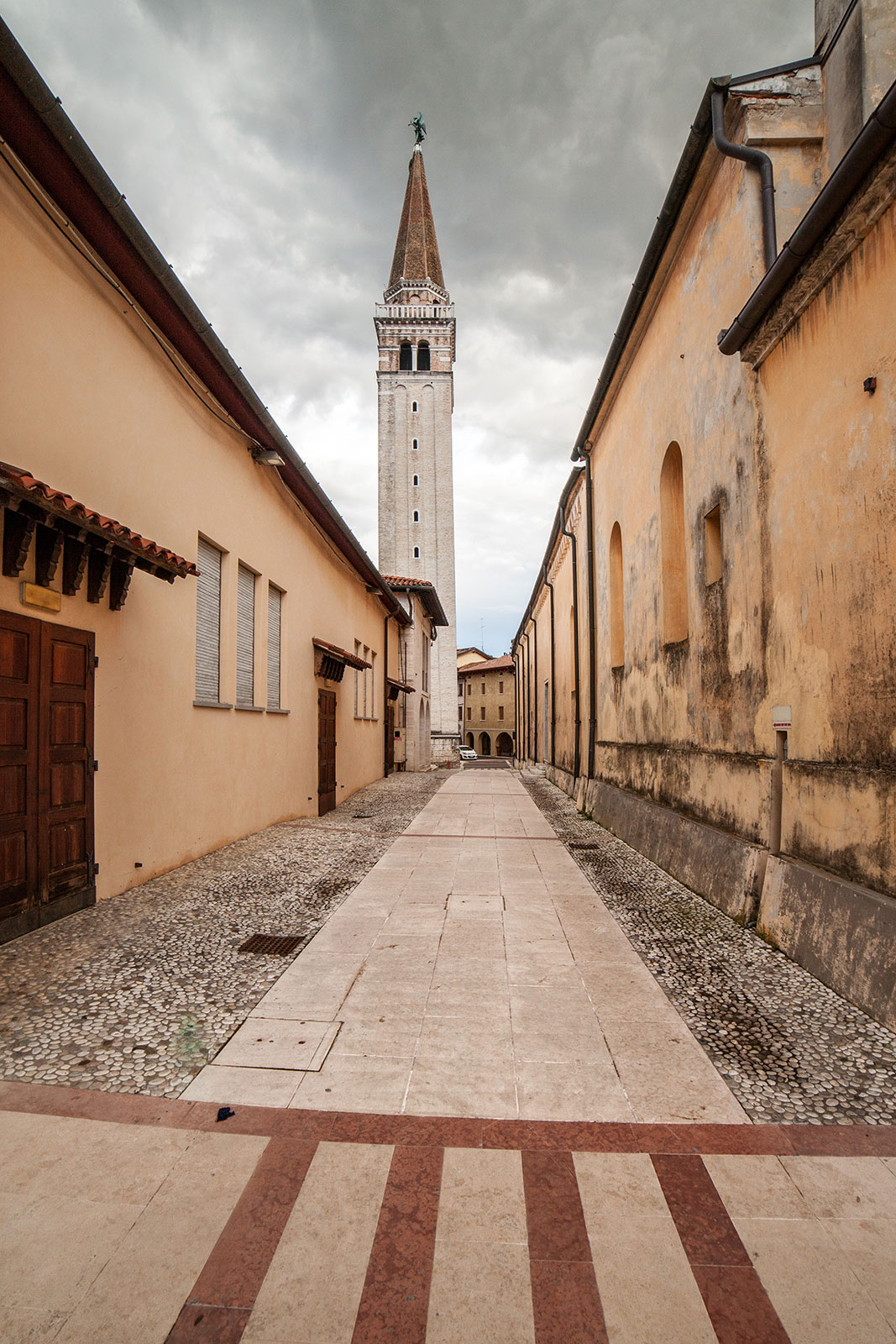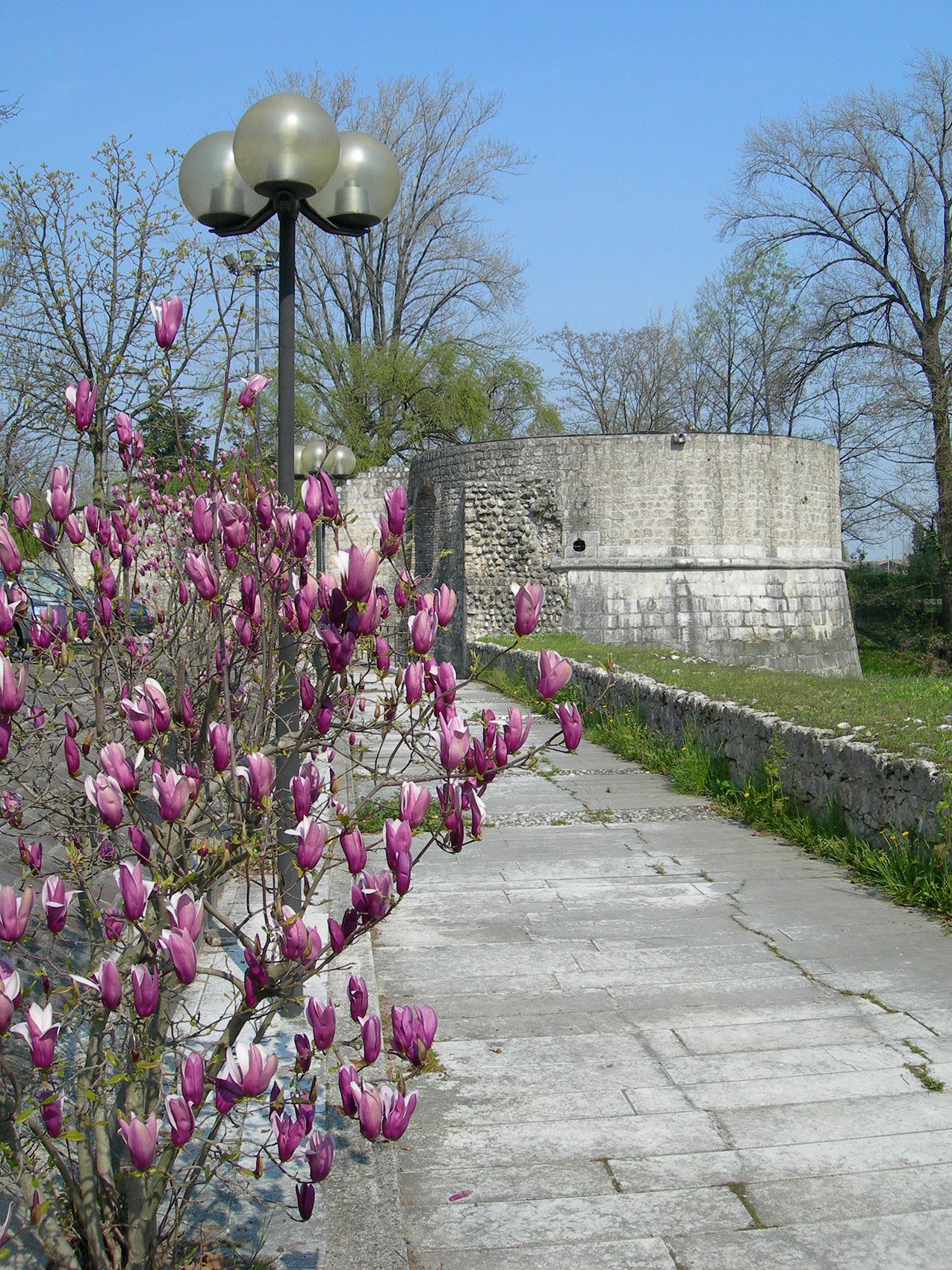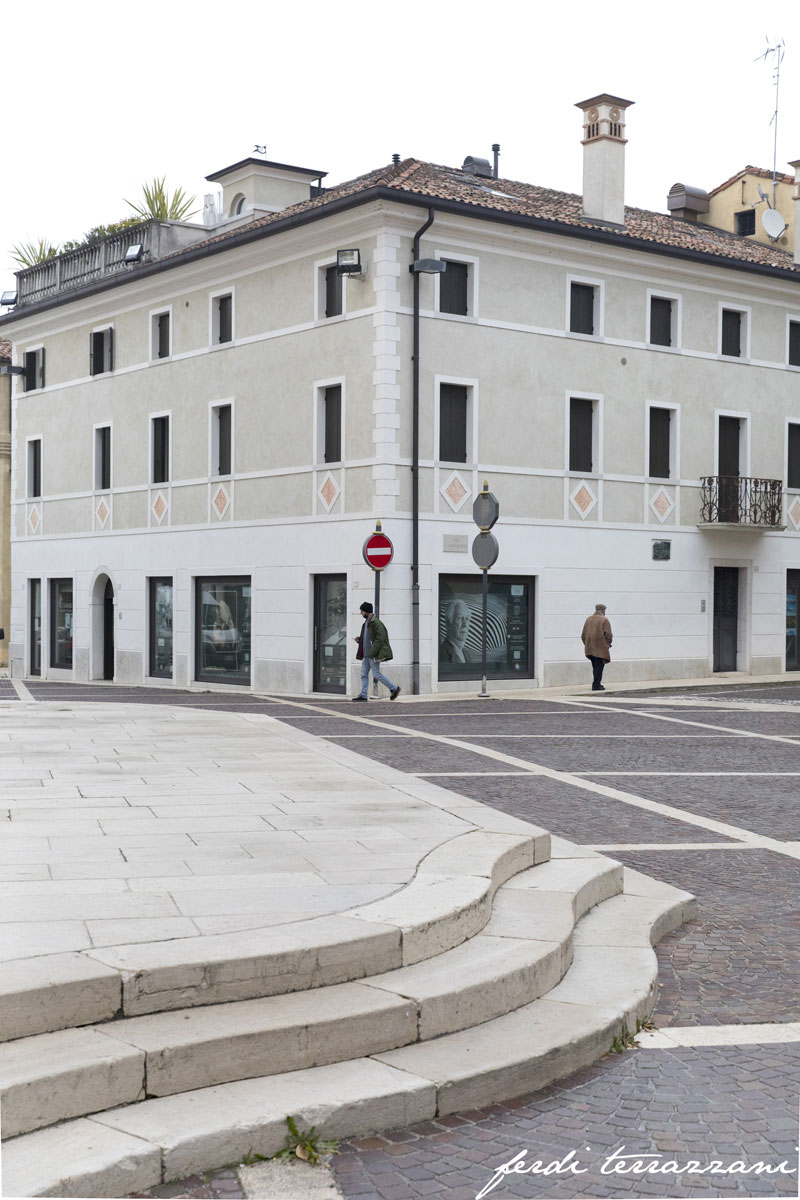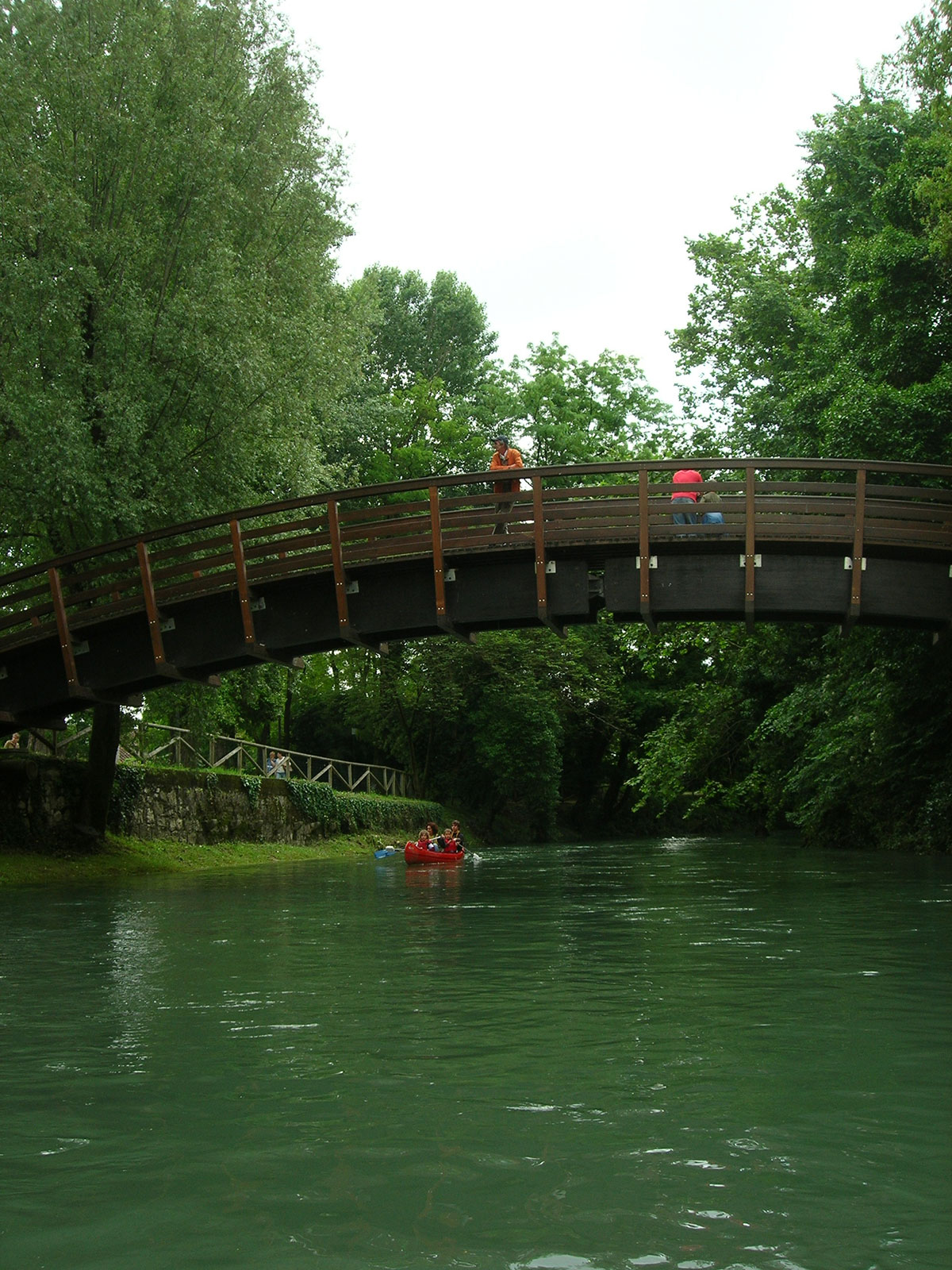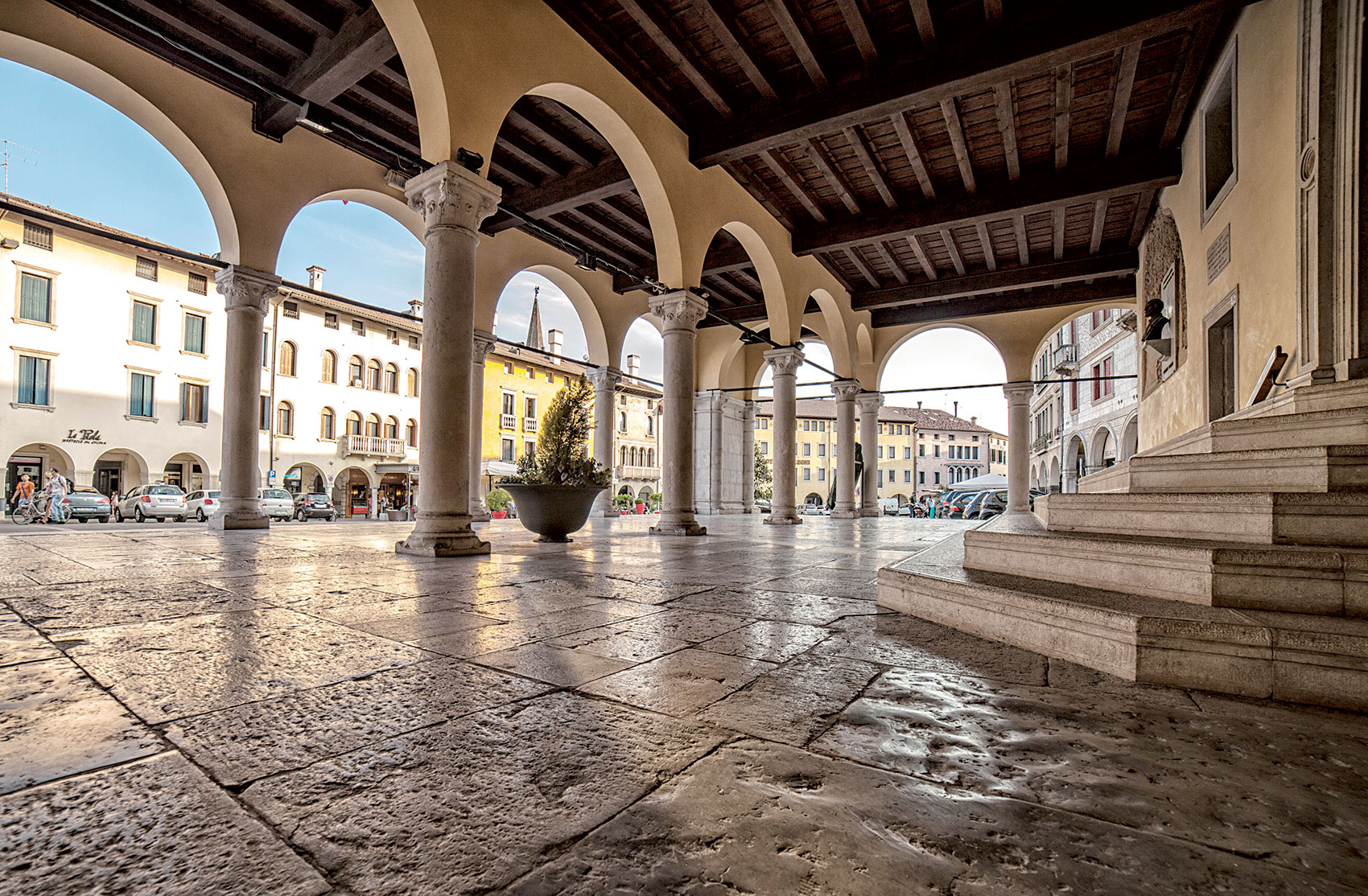An itinerary in Sacile’s historical centre is an opportunity to walk among its most ancient boroughs, its monuments of great historical and artistic interest, its natural panoramas created by the river Livenza. This itinerary starts from the train station and will lead visitors through the city’s most characteristic aspects.
From the train station, a short walk along Via G. Lacchin leads to Via Dante and, from there, to Campo Marzio with Palazzo Ettoreo and Palazzo Candiani. On the background, the river Livenza draws one of its most beautiful bends. A pedestrian bridge to the Duomo provides an evocative view on the river, on the old towers from the Commune period, on abandoned electrical stations and on the buildings in Piazza del Popolo. The pedestrian bridge leads directly to Piazza Duomo, almost a small Venetian square, located on one of the two islands created by the river, and once called “City”. Piazza Duomo is home to Duomo di San Nicolò, Palazzo Ovio Gobbi, Palazzo Carli with Centro Studi Biblici and Galleria Pino Casarini, and Chiesetta della Pietà. Historically, this is the most ancient part of the city, which was the heart of trade, while Piazza del Popolo was a residential area for the noble.


